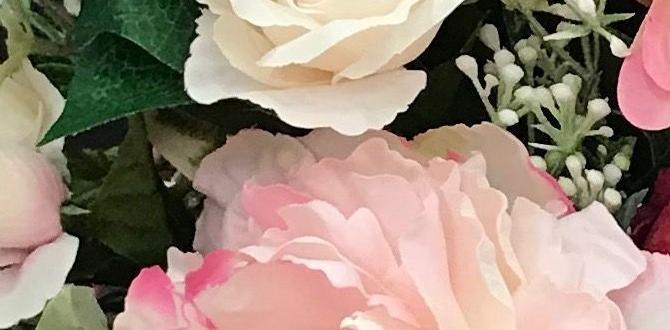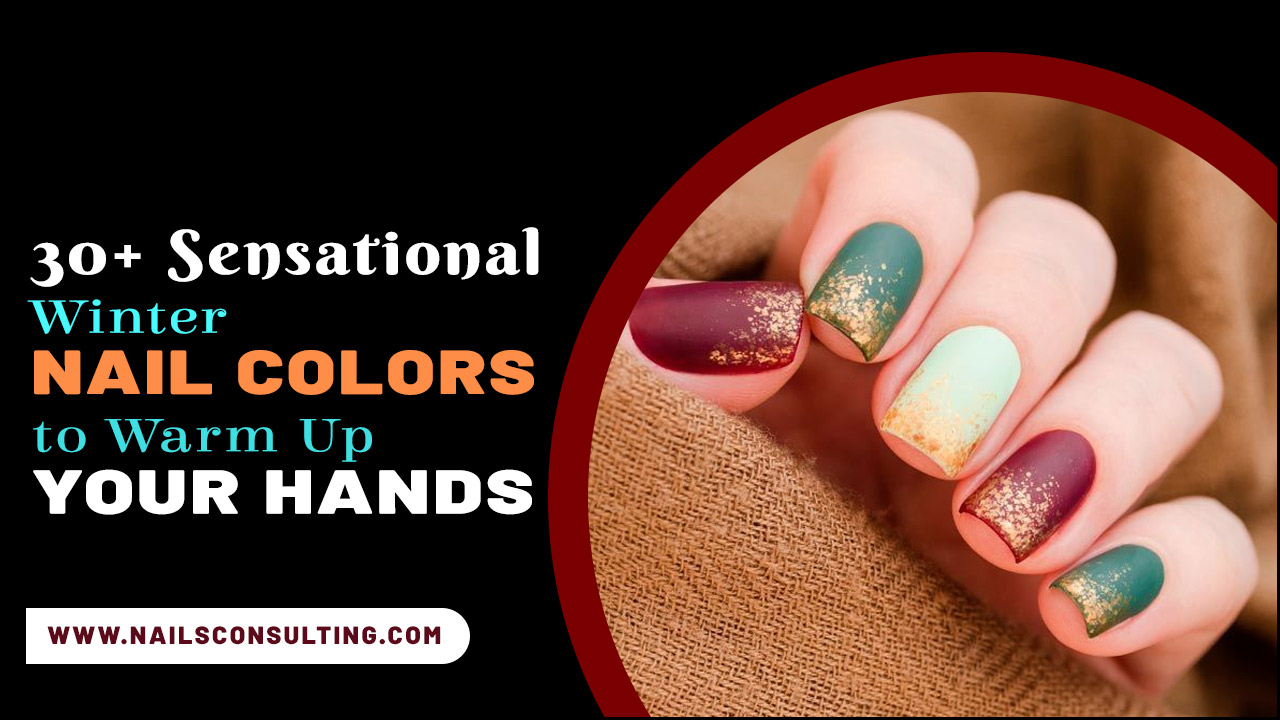Quick Summary
Learn how to do geometric nail art with these genius techniques! This guide breaks down simple steps and smart tricks for beginners to create stunning, precise geometric designs on your nails using accessible tools and easy-to-follow methods.
Feeling a little intimidated by intricate nail art? You’re not alone! Geometric nail art, with its clean lines and sharp angles, can look super pro. But guess what? It’s totally achievable for beginners! Forget those complicated designs that require a steady hand you haven’t quite mastered yet. We’re diving into straightforward methods that will have you creating eye-catching geometric patterns on your nails in no time. Get ready to unlock your inner nail art artist with techniques that are as fun as they are fabulous!
Geometric Nail Art for Beginners: Your Essential Guide
Geometric nail art is a fantastic way to add a touch of modern elegance and precision to your manicure. What makes it so appealing is its versatility – from minimalist single lines to bold, interlocking shapes, geometric designs can be adapted to suit any style and occasion. Whether you’re aiming for a subtle accent or a statement nail, understanding a few key techniques will make all the difference. Let’s get started on making these sharp designs your new go-to!
Why Geometric Nail Art?
Geometric patterns are timeless and chic. They offer a structured beauty that complements any outfit. Plus, they don’t always require artistic drawing skills. With the right tools and a little patience, you can mimic complex designs that look like they came straight from a salon. It’s a confidence booster and a great way to express your personal style!
Essential Tools for Geometric Nail Art
Before we jump into the techniques, let’s gather what you’ll need. Having the right tools makes the process smoother and the results cleaner. Don’t worry; you probably have some of these already or can find them easily at most drugstores or online beauty suppliers.
Must-Have Nail Art Supplies:
- Base Coat and Top Coat: The foundation and finisher for any manicure. A good base coat protects your nails, and a shiny top coat seals your design and adds longevity.
- Nail Polish in Your Chosen Colors: Select a few hues that complement each other.
- Thin Nail Art Brushes (Liner Brushes): These are crucial for drawing fine lines and details. Look for brushes with very fine tips.
- Dotting Tools: Great for creating dots and small circles, which can be incorporated into geometric patterns.
- Striping Tape or Washi Tape: This is a game-changer for creating super crisp, straight lines.
- Cuticle Guard or Latex Tape: Applied around your nails to protect the skin from polish mistakes. This makes cleanup a breeze.
- Nail Polish Remover and Cotton Swabs/Pads: For any inevitable touch-ups and cleanup.
- Tweezers: Helpful for precise placement of tape or other small elements.
- Clean-up Brush: A small, flat brush (an old makeup brush works too!) dipped in remover for cleaning up edges.
Genius Techniques to Master Geometric Nail Art
Now for the fun part! These techniques are designed to make geometric nail art accessible, even if you’re just starting out. We’ll cover a few of the most effective methods. Remember, practice makes perfect, so be patient with yourself!
Technique 1: The Striping Tape Method (For Perfectly Straight Lines)
This is arguably the easiest way to achieve sharp, professional-looking geometric lines. The key is in how you apply and remove the tape.
Step-by-Step with Striping Tape:
- Prep Your Nails: Start with clean, dry nails. Apply a base coat and let it dry completely. Then, apply your first color of nail polish and let it dry thoroughly. This is crucial – if the polish isn’t dry, the tape will lift it.
- Apply the Striping Tape: Carefully peel a strip of metallic or paper nail art striping tape from its dispenser. Use tweezers for precision if needed. Press the tape firmly onto your nail in the desired pattern. Ensure all edges are completely sealed down to prevent polish from seeping underneath. Think about creating borders for your shapes or dividing your nail into sections.
- Paint Over the Tape: Apply your second color of polish over the taped area. You can paint just one section or the entire nail, depending on your design. Apply a thin, even coat.
- Remove the Tape (While Polish is Wet!): This is the most important step for clean lines. While the second coat of polish is still slightly wet (not fully dry!), gently peel off the striping tape using tweezers or your fingernail. Pull it off slowly and at an angle. If you wait until the polish is dry, you risk chipping or lifting the design.
- Let It Dry & Seal: Allow the newly painted lines to dry completely. Once everything is dry, apply a good quality top coat to seal and protect your design.
Pro Tip: For multi-color geometric designs, let each layer of polish (between tape applications) dry completely before reapplying tape and new colors. This prevents colors from bleeding into each other.
Technique 2: The Freehand Method (With Fine-Tipped Brushes)
Once you get comfortable, drawing freehand can offer even more creative freedom. It’s all about control and using the right brushes.
Step-by-Step Freehand Drawing:
- Base and Color: Apply your base coat, let it dry, and then apply your main polish color(s). Ensure they are completely dry.
- Prepare Your Brush: Dip your fine-tipped nail art brush into your chosen polish color. Wipe off excess polish on the edge of the bottle or a lint-free pad. You want just enough polish for a smooth line.
- Draw Your Lines: Hold your hand steady and gently guide the brush across your nail. Start with simple shapes like triangles, squares, or straight lines. For lines, try to make one smooth stroke rather than short, jerky movements. You can also use the brush to dot and connect points.
- Clean Up Mistakes: If you make a mistake, don’t panic! Dip a clean-up brush (or a fine-tipped cotton swab) into nail polish remover and carefully trace around the mistake to clean it up. This is where a latex cuticle guard can be a lifesaver.
- Add Details: Once your main geometric shapes are dry, you can go back with a thinner brush or a dotting tool to add smaller details, dots, or outlines.
- Top Coat: Finish with a generous layer of top coat to protect your artwork.
External Resource: For tips on brush control and hand steadiness, check out resources on fine motor skills, which can be beneficial for detailed tasks like nail art painting. For instance, occupational therapy guides often offer exercises for improving dexterity. While not directly about nail art, they can help build the underlying skills.
Technique 3: Stamping Plates (For Stencils on Demand)
Nail stamping plates are like stencils for your nails. They offer incredibly detailed and repeatable patterns with minimal effort.
Step-by-Step with Stamping Plates:
- Base Prep: Apply base coat and your chosen polish color. Let it dry completely.
- Apply Stamping Polish: Use a special stamping polish (these are more opaque and pigmented) or a highly opaque regular polish on your stamping plate.
- Scrape: Immediately after applying polish to the plate, use a stamper scraper tool to scrape off the excess polish. Hold the scraper at a 45-degree angle and use a quick, firm motion.
- Stamp: Roll your stamper head gently over the scraped design on the plate to pick up the image.
- Transfer to Nail: Quickly and gently roll the stamper head over your nail to transfer the design.
- Clean and Repeat: Clean your stamping plate and scraper tool with polish remover. Repeat the process for other nails or add more designs.
- Top Coat: Once the stamped design is dry, apply a top coat. Be careful: some top coats can smudge stamped designs if they are too watery. Use a quick-dry, non-smearing formula if possible, or apply a very light, quick layer.
Where to find quality stamping plates: Many reputable brands offer excellent stamping plates. Websites like Clear Jelly Stamper or retailers like Born Pretty provide a wide variety of designs.
Technique 4: Using Cuticle Guard or Latex Tape
This isn’t a stamping or drawing technique, but it’s a genius facilitator for all geometric nail art. It’s your secret weapon for perfect edges.
How to Use Cuticle Guard:
- Apply: Using a brush or a pen applicator, carefully paint a layer of liquid latex or cuticle guard around the skin of your nail. Make sure to cover any skin you don’t want polish to touch.
- Dry: Let the liquid latex dry completely. It will turn from liquid to a solid rubbery layer.
- Do Your Art: Proceed with your geometric nail art – painting, taping, stamping, etc.
- Peel Off: Once your nail polish is dry (or you’re ready for cleanup), use tweezers to gently peel off the dried latex. It will come off in one piece, taking any polish smudges with it, leaving perfectly clean edges.
Benefits: This method dramatically minimizes cleanup time and makes complex designs appear much neater. It’s especially helpful for beginners who might be prone to making small mistakes around the cuticle area.
Geometric Nail Art Design Ideas for Inspiration
Once you’ve got the techniques down, let’s look at some design ideas to get your creative juices flowing. You can combine these techniques for even more intricate looks!
Simple & Chic
- Minimalist Lines: A single thin black or white line across a nude nail or just at the tip. (Striping tape or fine brush).
- Half-Moon Geometric: A clean line dividing the nail into two geometric sections, often using contrasting colors. (Striping tape).
- Triangle Tips: Applying a triangle shape of a contrasting color at the tip of the nail. (Striping tape or freehand).
Bold & Graphic
- Checkerboard: Small squares creating a checkerboard effect. (Striping tape is best for precision, but stamping plates also offer this).
- Interlocking Shapes: Using multiple colors to create a pattern of interlocking squares, triangles, or rectangles across the nail. (Striping tape or freehand).
- Color Blocking: Large, distinct geometric shapes filling different sections of the nail. (Striping tape).
Detailed & Intricate
- Lace-like Patterns: Using very fine brushes or stamping plates with delicate geometric patterns.
- Gradient Geometric: Geometric shapes filled with a gradient of colors.
- 3D Geometric Accents: Using small geometric charms or stud embellishments on top of a geometric base design.
Common Geometric Nail Art Mistakes (And How to Avoid Them!)
Even with the best techniques, a few common slip-ups can happen. Here’s how to navigate them:
| Common Mistake | Why It Happens | How to Fix/Avoid |
|---|---|---|
| Polish Seeping Under Tape | Tape not pressed down firmly, or polish applied too thickly. | Ensure tape is pressed down with no lifted edges. Apply polish in thin, even coats. Use cuticle guard for an extra barrier. |
| Smudged Designs | Touching the polish too soon, or top coat being too aggressive. | Wait for polish to dry completely before touching it. Use a quick-dry, non-smearing top coat, or be very gentle and quick when applying. |
| Wobbly or Uneven Lines (Freehand) | Lack of practice, unsteady hand, or too much polish on the brush. | Practice on paper first. Use a thin brush and just the right amount of polish. Stabilize your hand and arm when painting. |
| Lifting Polish with Tape | Removing tape when polish is too dry, or trying to peel tape too aggressively. | Remove tape while the polish is still wet. Peel slowly and at an angle. |
| Overcrowded Design | Trying to fit too much onto one nail. | Simplicity is often key! Focus on one or two clean geometric elements per nail, or dedicate accent nails for more complex designs. Consider the size and shape of your nail. |
Mastering these small fixes will make your geometric nail art journey much smoother and more enjoyable!
Frequently Asked Questions About Geometric Nail Art
Let’s tackle some common questions beginners have about geometric nail art.
Q1: How do I get sharp, clean lines without striping tape?
A1: It takes practice! Use a very fine-tipped liner brush and very little polish. Stabilize your hand and arm, and try to make one continuous stroke. A clean-up brush dipped in remover is your best friend for correcting minor wobbles.
Q2: Can I use regular nail polish for stamping, or do I need special stamping polish?
A2: Special stamping polishes are thicker and more pigmented, making them ideal for picking up fine details and transferring them cleanly. However, many highly opaque, non-shimmer regular polishes can work, especially on larger designs. Experiment with what you have!
Q3: My geometric designs always end up looking messy. What am I doing wrong?
A3: Common culprits are working too fast, not letting layers dry, or using too much product. Ensure each layer is fully dry before applying tape or the next polish color. Precision tools like fine brushes and cuticle guard are also essential for a clean finish.
Q4: How long does geometric nail art usually last?
A4: With a good base coat and a quality top coat, geometric nail art can last as long as a regular manicure, typically 1-2 weeks. Avoiding harsh chemicals and activities that can chip nails will help extend its life.
Q5: What kind of top coat should I use to avoid smudging?
A5: Look for a “gel-like” or quick-dry top coat that has a good consistency – not too watery. Apply it in one thin, swift motion over your design. Avoid “brushing” it on repeatedly. Some people prefer to add a quick-dry spray after applying the top coat.
Q6: Can I use regular craft acrylic paint for nail art instead of polish?
A6: Yes, many nail artists use acrylic paints for detailed designs because they dry faster and are easier to control for fine lines. However, you MUST seal them thoroughly with a good top coat to protect the paint and your nails.
Q7: My nails are very short. Can I still do geometric nail art?
A7: Absolutely! Shorter nails are actually great for geometric designs. Smaller, simpler geometric patterns often look best on shorter nails. Think about simple lines, small dots, or a minimalist triangle at the tip.
Conclusion: Your Geometric Masterpiece Awaits!
There you have it! Geometric nail art is no longer an intimidating concept. With these genius techniques and a little practice, you’re well on your way to creating stunning, precise designs that will turn heads. Remember to prep your nails properly, invest in a few key tools like fine brushes and striping tape, and don’t be afraid to experiment with different colors and patterns. Techniques like using striping tape for crisp lines, freehand drawing with a steady hand, and employing nail stamping plates or cuticle guards are your secret weapons. Embrace the process, have fun with it, and let your creativity shine through those perfect geometric shapes. Your next beautiful DIY manicure is just a few simple steps away!



